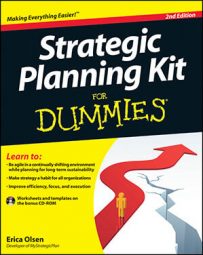Strategic planning can yield less than desirable results if you end up in one of the possible planning pitfalls. To prevent that from happening, here’s a list of the most common traps to avoid:
Not having a burning platform: Fundamentally, organizations don’t have to have a strategic plan. Really, they don’t. Yes, you’ll run a better operation and, yes, a strategic plan is an outstanding management tool. But you and everyone on your team needs to agree on why this effort is important. What’s your burning platform that’s causing you to invest in this effort now?
Relying on bad info or no info: A plan is only as good as the information it’s based on. Too often, teams rely on untested assumptions or hunches, erecting their plans on an unsteady foundation.
Ignoring what your planning process reveals: Planning isn’t magic: You can’t always get what you want. The planning process includes research and investigation. Your investigation may yield results that tell you not to go in a certain direction. Don’t ignore that information!
Being unrealistic about your ability to plan: Put planning in its place. It takes time and effort to plan well. Some companies want the results but aren’t willing or able to make the investment. Be realistic about what you can invest. Find a way to plan that suits your available resources, which include your time, energy, and money.
Planning for planning’s sake: Planning can become a substitute for action. Don’t plan so much that you ignore the execution. Well-laid plans take time to implement, and results take time to yield an outcome.
Not having your house in order first: Planning can reveal that your house isn’t in order. When an organization pauses to plan, issues that have been buried or put on the back burner come to the forefront and can easily derail its planning efforts. Make sure your company is in order and no major conflicts exist before you embark on strategic planning.
Copying and pasting: Falling in to the trap of copying the best practices of a company similar to yours is easy. Although employing best practices from your industry is important, other organizations’ experiences aren’t relevant to your own. Organizations are unique, complex, and diverse. You need to find your own path instead of following a cookie-cutter approach.
Ignoring your culture and organizational readiness: Strategy and culture are intimately intertwined. Ignore this fact at your peril. Culture eats strategy for lunch (and dinner if you’re not careful). With that in mind, adapt your planning to fit what you know works for your organizational rhythm, ethos, and needs right now. A big pitfall — the biggest actually — is not fitting the process to your organizational needs. Consider a simpler process or one that’s more robust.

